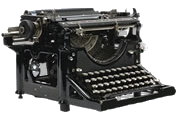Congress Approved $5,000,000,000 Build-Up
(PM Tabloid, 1940)
To fulfill the [Pentagon’s requirements] the President plans to send Congress one more defense message asking for another $5,000,000,000. After that, with machine industries saturated with orders, Congress can sit back and survey the defense picture – provided England doesn’t collapse overnight… Acting Secretary of the Navy Compton announced yesterday the award of contracts for three aircraft carriers and two cruisers to the Newport News Shipbuilding and Drydock Co….
